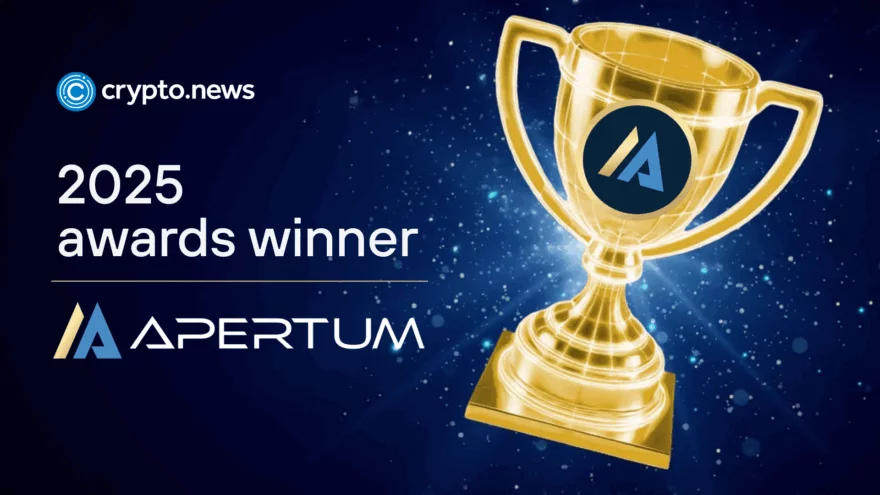Industry must look past the arbitrary buying and selling of pixels | Opinion
Disclosure: The views and opinions expressed here belong solely to the author and do not represent the views and opinions of crypto.news’ editorial.
The floor price of popular non-fungible tokens (NFTs) is plummeting. Across the board, we see stories of vast amounts of money disappearing and no one is immune. All eyes are on the crypto industry; all eyes are watching to see where innovation will take us. Yet oftentimes it feels like headlines focus on trivial market fluctuations driven largely by random explosions of activity in trading and minting NFTs.
The future is clear: we must move past the mainstream perception that NFTs are to be confined to the buying and selling of pixels.
It is high time for industry leaders to focus our combined efforts on the possibilities. As we march toward the new frontier where the digital and physical worlds converge, it’s time to focus our synergy on driving actual use cases for NFTs.
The value ideal
News in recent times has seen endless permutations of stories about the value of incredibly popular (and, for a time, liquid) NFTs and their subsequent stark drop in price. These stories beg the question: without any intrinsic value outside of what the market determines their value to be, how valuable can these pixels really be?
Early conversations around NFTs excitedly pointed to the fact that digital ownership ensured an artist’s work retained its place in the artist’s portfolio or buyer’s hands, truly combatting the theft and illegitimate use of digital art. This opened a new avenue for the technology and catapulted some artists into the stratosphere (and for many, rightfully so); Beeple broke records with “Everydays – The First 5000 Days”, selling for $69.3 million, until Pak’s series of NFTs “The Merge” brought in a staggering $91.8 million.
In art and, indeed, in collectibles, there are clear use cases for utilizing the revolutionary technology behind NFTs. However, the technology has increasingly been abused and used as a novelty, more than anything. Marketplaces have witnessed simple jpegs selling well into the 10s of thousands of dollars, without any real intrinsic value underpinning the offering. The major value proposition of these NFTs has largely been betting on the fact that buyers can sell the images for a higher price.
As time has repeatedly shown, the vast majority of NFTs are painfully overvalued.
Non-fungible items
The industry is overdue for some soul searching, and it is time to really reflect on what intrinsic value may look like for NFTs. The new horizon approaches. For COZ, this represents the digital world that you can touch and interact with physically. In other words, the non-fungible item (NFI) has arrived.
In practical terms, an NFI means taking a physical asset, for example a ring, and giving it a software development kit. In theory, these items can’t be stolen, as all assets that use NFI technology are unique, meaning you can prove item ownership. On a more technical level, the technology exposes a censored, counterfeit-proof payload that is cryptographically bound on-chain and to the item. So, in general terms, it is taking any physical item (be it a ring, a piece of art, a t-shirt, a handbag) and giving it an interaction-capable software development kit.
Brands are taking notice. Yvel, a fine jewelry house, launched its Independent Non-Fungible Security (INFS), a trading platform merging blockchain with real-world guarantees in the form of unique gold coins adorned with diamonds and other precious stones. Crurated, a wine community, is leveraging blockchain and NFTs with every bottle of wine that enters its warehouse. Each bottle is assigned an NFT — recorded on the blockchain — to verify authenticity and provide key information, which is then updated as the wine is bought and sold.
Use cases
Though an emerging technology, NFI’s also demonstrate huge potential across traceability (as physical assets are each cryptographically unique and information stored on the blockchain), providing proof-of-ownership (as blockchains are critical in managing and asserting ownership in a decentralized way), and attaching loyalty rewards to a distinct physical assets.
These examples, marking the beginning of what is conceivably possible, illustrate the key defining factor which is so often missing from the conversation: intrinsic value.
Increasingly, NFTs are being used across real estate, preservation of cultural and relevant political information, and even facilitating fundraising for those disenfranchised across the globe, which in time will no doubt positively impact the course of innovation.
Looking to the future, we must focus on these tangible — and, most importantly, useful — use cases. They represent far too much potential to be dismissed in favor of headline-grabbers.
While we watch the prices on NFT marketplaces rise and fall, it is very easy to believe the cycle will continue in repeated patterns. However, when we take a step back, NFTs clearly hold endless potential.
We are simply at the beginning of realizing what is possible. Where the digital and physical worlds converge is where the opportunities lie.













